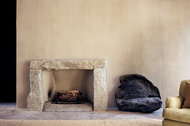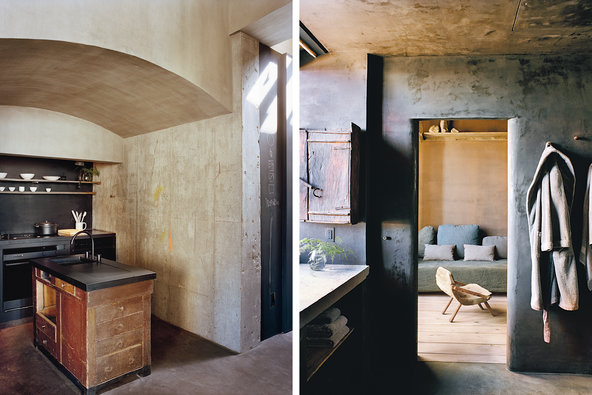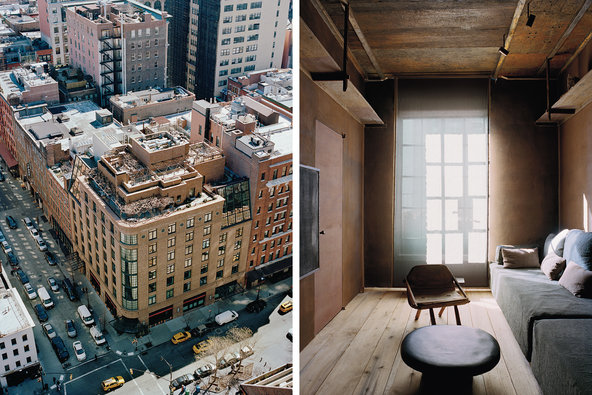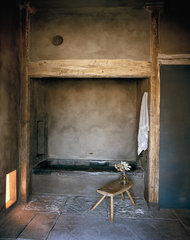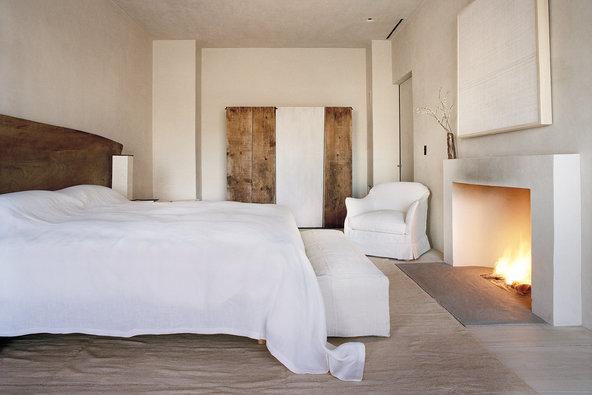Belgian interior designer and antiquarian, Axel Vervoortd, recently cast his imitable style over a three-bedroom penthouse suite in New York’s Greenwich Hotel, owned by Robert De Niro and Ira Drukier. One-part Japanese farmhouse and another part aged stone château, the newly conceived aerie over Manhattan introduces an unexpected aesthetic in the city that never sleeps: wabi-sabi. For inspiration and grounding I have long revered Leonard Koren’s book Wabi-Sabi For Artists, Designers, Poets & Philosophers. In the introduction Koren philosophizes that wabi-sabi is a beauty of things imperfect, impermanent, and incomplete. It is a beauty of things modest and humble. It is a beauty of things unconventional. Vervoordt waxed poetic over wabi-sabi in his eponymous tome, Wabi Inspirations. The Japanese word wabi means “sober refinement” and sabi means “patina”. It is, according to Vervoordt, a personal philosophy and a highly individual way of seeing, feeling and thinking free of boundaries or dogma.
For the construction of the penthouse Vervoordt enlisted long-time collaborator Tatsuro Miki, a Japanese architect, to assist in creating the essence of wabi-sabi in an urban space where none existed, within or without. The end result is an alchemical transformation of disparate elements into one of aesthetic harmony. One leaves the rumble and roar of city life on the streets to a haven of solitude in the sky. In the meditative living area, above, a diminutive oculus is punched into the wall over the sofa, and the large coffee table was discovered by De Niro at Vervoordt’s booth at the Winter Antiques Show.
The fireplace mantel is an expression of the beauty of wabi-sabi imperfection.
The compact kitchen resembles an ancient Roman bath with merely the essentials; a guest room is visible through its bathroom, both elemental and raw by design.
The guest room also functions as a TV lounge.
An unfortunately small photo of a bathroom features a bathtub re-purposed from a 17th-century trough, framed out in antique timber. Barely visible, on the left, is a fireplace punched through from the master bedroom.
The master bedroom is a study in white, hand-made furnishings and natural materials. The “art” above the fireplace, which conceals a TV, is actually a piece of antique Flemish linen.
For the full story read David Netto’s article for TMagaine here. Photography by François Halard.












